Behind the Scenes with CatTrigger
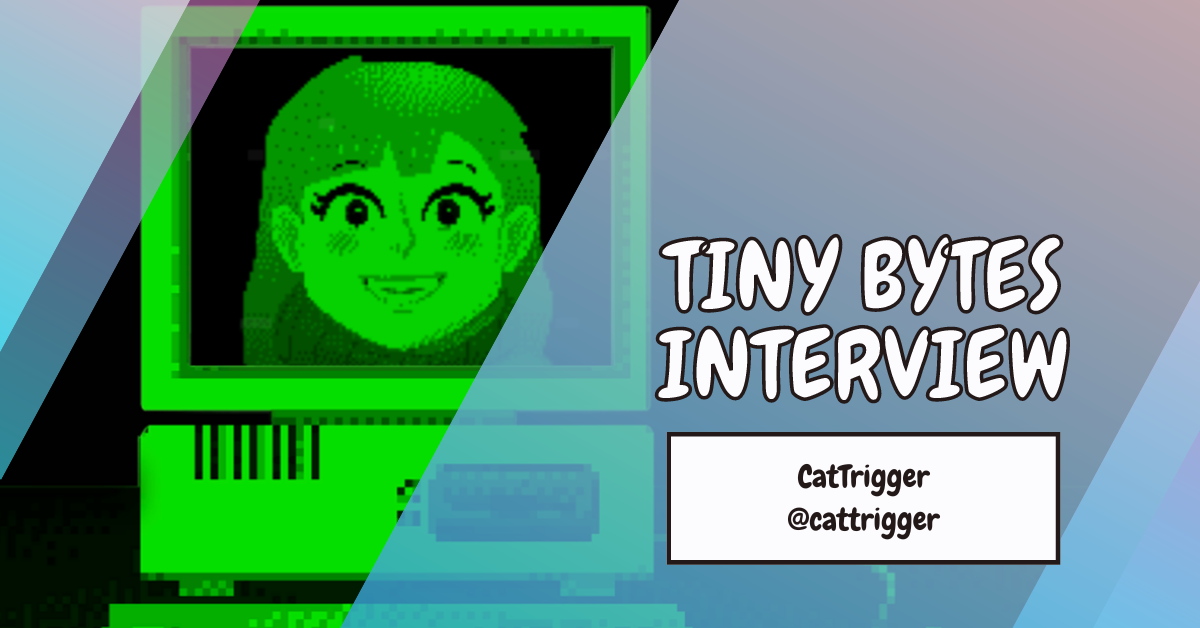
CatTrigger is a Chicago-based animator, artist, game developer, and motion designer! They released their first visual novel, The Last Job, back in 2018. A couple of years later, they made their return to visual novels with Bad Faith, an game adaptation of a comic for Spooktober Jam 2021. Flashing forward, they have gained a lot of attention for their romance horror games Melissa💗 and Morris💗, short visual novels where you play a new dating sim series called "Date Time," titles where you go on virtual dates with the titular characters. Today, we sat down with CatTrigger to learn more about them, their art, their journey in game development, and how they're taking in the overwhelmingly positive reception to Melissa💗 and Morris💗!
Can you tell us a little bit about yourself and how you got into game development?
Hello! I'm an Artist, Animator and Professional Motion Designer based in Chicago! Most of my work is dedicated to video production, but I also have a background in illustration as well!
I had been fascinated by game development for a long time. A few of my friends went down that road, and I did some graphics & animation for a few minor projects throughout my career too!
In recent years I began to produce my own games, and much of the encouragement came from the very energetic visual novel community, and their game jams!
Your first visual novel was The Last Job, a visual novel about an assassin who is ordered to take out the president so they can have enough money to retire. In the game’s description, you mentioned it was an experiment to familiarize yourself with the Unity engine. Can you talk to us a bit about what it was like making your first visual novel and how much you’ve learned and evolved over the years?
Oh my GOD! I nearly forgot about this game! It's not a very glamorous backstory when it comes to "The Last Job".
I jumped on the chance to try VNs for the first time during a Nanoreno game jam, and as you mentioned, it WAS SUPPOSED to make me feel more comfortable in the Unity game environment and be a launching point for me to develop more games!
It turned out not to be that. I completely dropped out of game dev for 3 years after I finished it. It wasn't because I didn't enjoy making it... it was a lot of fun, and I thought it was a nice creative exercise.
But I guess, whatever spark I thought it'd give me... didn't happen. Coming back to VNs in 2021 was kind of like hitting the reset button on rediscovering this itch.
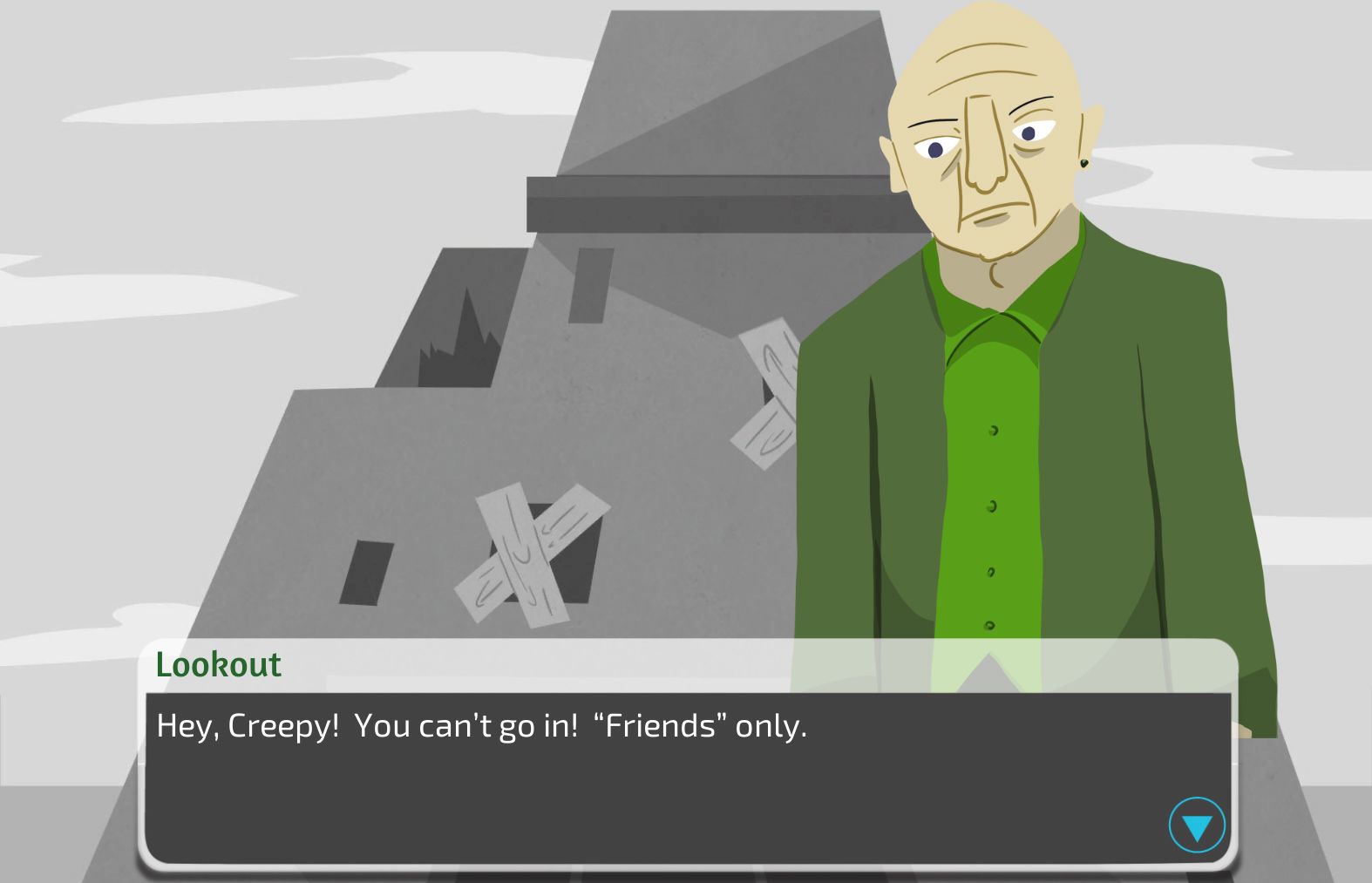
Given your game development journey, what is your advice to those who have given up on making their games because they didn't get that spark like you originally didn't get after releasing The Last Job?
For me, it was better to "stay creative" than "stay persistent", especially so early on when I was still exploring my comfort levels in everything.
A little while after I finished "The Last Job", I started working on the weekly funny comic strips I mentioned before, and quite honestly... I can't imagine being a game developer now without doing that.
The medium can't be more different from Visual Novels, of course...
...but during that time, I did a ton of comic strips where I brainstormed ideas, sketched them out, and finalized them in a short period of time to an audience of strangers. The hobby actually led me to be far more comfortable with almost every aspect of my artistic prowess.
I was doing better in my professional work because of it. I was able to storyboard faster, write better prompts, and brainstorm in a streamlined way.
And when I came back to Visual Novels, everything seemed far more tangible and easier to wrap my head around because I spent a good amount of years almost daily drawing and writing for a completely different thing.
My transition from "Bad Faith: the Comic" to "Bad Faith: the Game" was almost the same story, but reversed. Something in comics got me stuck, so I switched to something else.
There's a lot of advice out there about staying motivated and persistent, and reigniting fire lost on a project or goal, but I also think it's equally as valuable to sometimes switch to something else to help change your perspective and improve skill sets in other ways.
Your next release was Bad Faith, a horror game about an obese boy undergoing weight loss treatment after his mother has tried everything to get him to lose the weight. It’s a very interesting take on obesity and how people view those who are overweight (e.g., less than skinny people, the mom calling her son “IT”). Can you talk to us a bit about what inspired this game’s creation?
Alongside the Bad Faith visual novel, you also released a short comic for it. How different was your approach to the comic version compared to the visual novel?
Note: CatTrigger combined their answers for these two questions into one.
The comic "Bad Faith" was created before I even considered a VN version. It was my first attempt at a legitimate horror story, and it was made to be published for a Chicago-based Comics Anthology.
My direction with the story was to make it an abstract religious allegory concerning body image issues through the reinforcement of shame and guilt on proportions similar to "fire & brimstone" brands of religion. The combination I thought was pretty tantamount, as things you indoctrinate, especially on children.
But the comic was difficult to work with. I had so much trouble trying to finish pre-production of the story. The kind of story I wanted to tell was just too new to me, and trying to tackle it through the linear stages of developing a comic was leading me to procrastinate. I actually begged the editor of the anthology for a few extra weeks, and I banged out a version of it that was legible. I don't think of the comic as a "failure", but it definitely feels like a polished draft concept.
I did want to work on an "expanded" version of the comic that captured my intentions better. But working through the comic format was making my brain hurt! When the "Spooktober 2021" VN Game jam started, I signed up as an excuse to finally finish it. And my god, this was the thing that sold me on VNs.
I think in many ways, what clicked with VNs that didn't with comics for me, was that comics had a much more linear and strict production process, which made it quite difficult for me to "know" if something was wrong as I was building the story.
Visual Novels on the other hand are much more like a puppet show that you can play in front of yourself. And being able to "playtest" ideas was very crucial to me finally putting a nail to the coffin of the "Bad Faith" story.
Playtesting added clarity to creative problems: If I'm playtesting something, I can get a feeling of where a scene is slow, or rushed, or confusing. And feeling those problems out so quickly helped me form faster solutions.
I also have a more geared head for "video production" which includes me spending long periods of time playing through the same multi-second clips to "feel" out what may be right or wrong with something. So perhaps for this type of story, a VN is just easier for me.
"Bad Faith" the VN was an incredible experience, and I immediately fell in love with the medium after the jam.
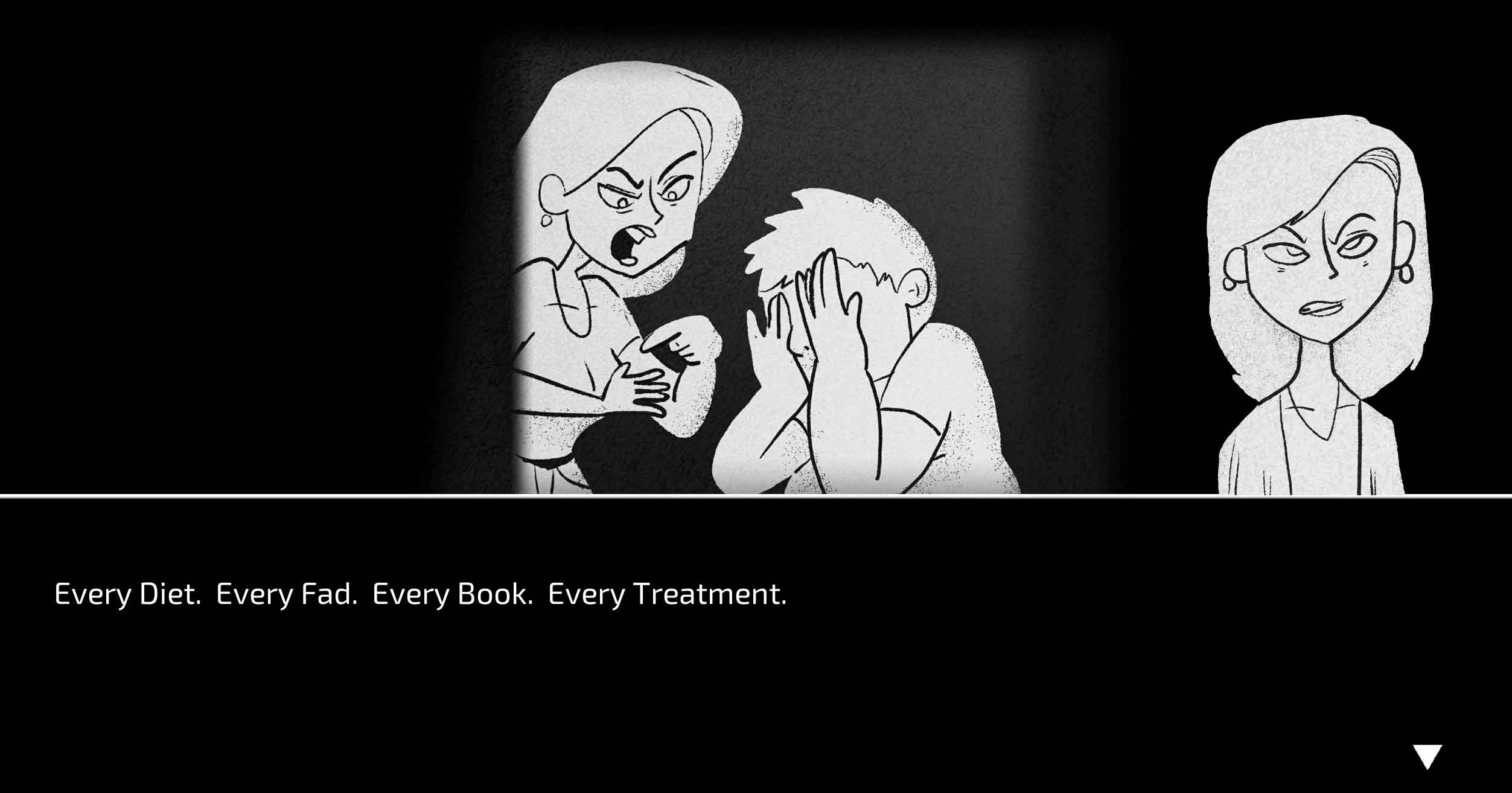
Long Time No Life was your O2A2 2022 submission. It’s a sad story about Renata, a scientist desperately trying to keep the player (who is also their lover) alive through a machine. When you decided to enter O2A2, what kinds of things did you think about, and how did you end up going with Long Time No Life?
O2A2 is a very awesome concept for a game jam since it challenges people to make games with (almost) unreasonably small amounts of resources. Being stuck with the same single character, background, sound effect and soundtrack definitely brings out the type of stories you probably wouldn't see otherwise.
Being forced to reuse the same assets actually gave me the feeling of repetition, which is the basic subject matter of Long Time No Life: Trying something again and again, and getting the same result. And also the feeling of futility and helplessness as the failures wrack up over time.
Death of a loved one is a subject matter that everyone has experienced. Especially when you are taken through the process every day as it's happening.
Long Time No Life is a story about death and grief. Tell us your process when it came to writing such a delicate topic, given that you're limited to a maximum 1,000 words to tell your story.
Quite honestly, I didn't approach LTNL as a project with a delicate topic and was actually a bit surprised when people responded to it in an emotional way.
It's hard to intellectualize my planning with the story, but much of the dialogue in the piece borrows heavily from my own experiences.
I would say that if I had considered LTNL as a project with a delicate topic, I might've been more nervous about writing it. This was much more of something coming from me, so I didn't feel it was too hard a topic to write.
I am happy that it resonates with so many people!
In terms of its word length... Renata is the entire game. If you condense it to its base concept, it's her having an internal monologue about someone she loves. I actually didn't have to do much to ensure I reached that 1,000 word limit. I do think, if I had added another "active" character... things would've been different.
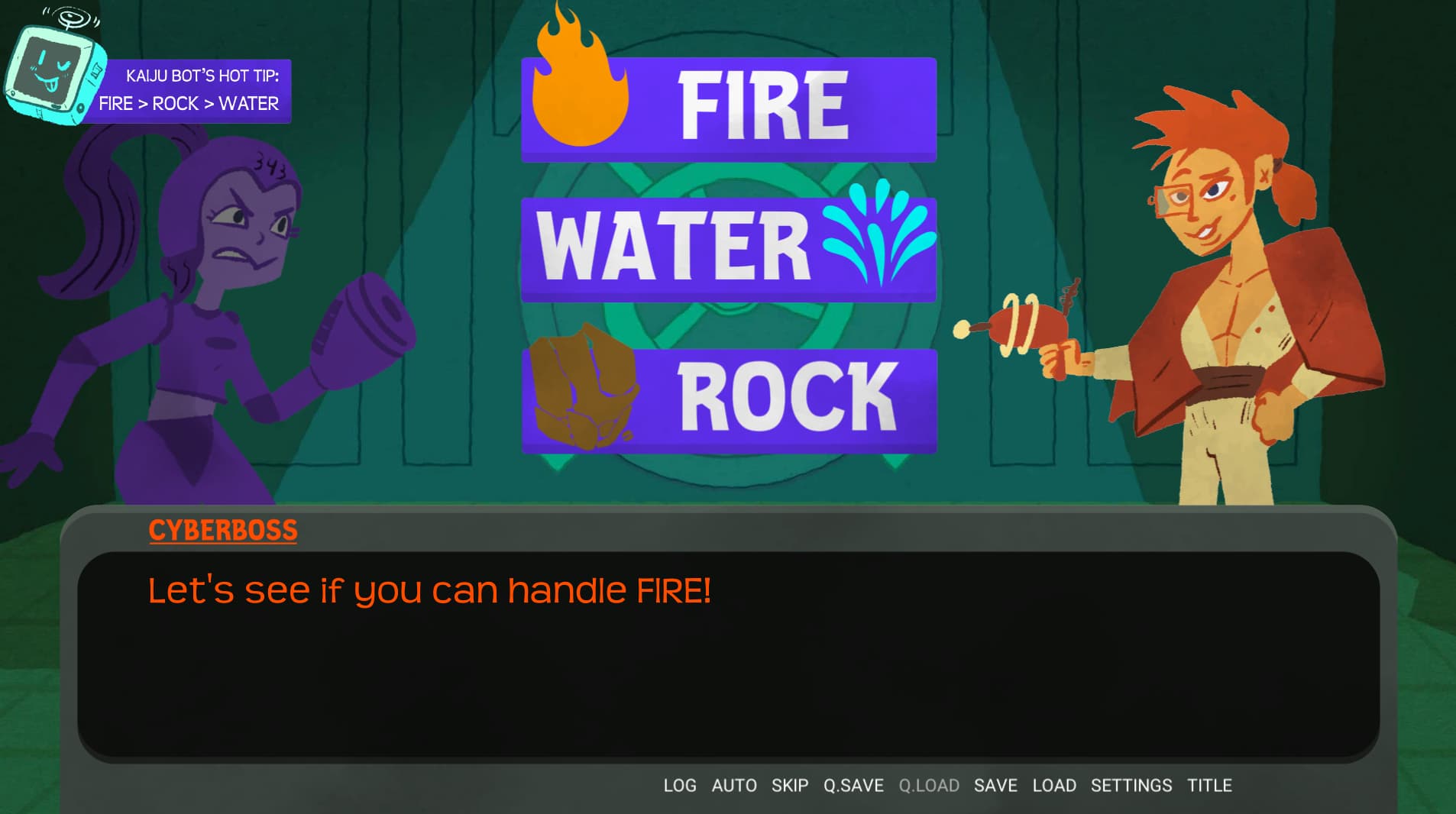
Another game you released was the full version of All Below Kaiju Zaibatsu, a romance sci-fi story with a lot of themes mixed in. This is one of your longer titles and includes minigames. Did you face any challenges making this title?
I really REALLY wanted to do a ROMANCE story, a genre I was never really comfortable working on, so I started outlining several ideas I had. I had difficulty thinking about the themes I wanted to use in the story. I was bouncing between different settings and couldn't really settle with one that I thought spoke out to me.
ABKZ actually was a bit of an evolution of several thrown away ideas, and my experience bonding with a group of people through VRChat, a VR-oriented social game where you can explore endless amounts of user content and become avatars of different people.
It's a weirdly emotional experience. We went "avatar shopping", and my best friend settled to be his favorite Star Trek character (Captain Picard), my other friends would choose to be a scuffed Batman, a series of different historical artifacts or a weird shirtless bald kid, and I saw an Anime bunny girl that I thought looked cute. And despite us all NOT looking like any of these characters in real life and doing dumb shit throughout all these weird VR worlds... we grew closer as friends.
Essentially, the main themes of ABKZ reflect my experience with VRChat, and a sense of optimism of using tech as a way to bring people closer together, as well as the sense of pessimism, as tech companies figure out ways to monetize these platforms that can do the opposite.
ABKZ was made during the rise of the Metaverse. Meta had this view of the future of social VR that seemed heavily corporate, exploitative and sterile. Even with VRChat, you see people talk about the platform needing to eventually make money for their investors, and that the sense of freedom we have on the platform is temporary.
Finding that theme led me to create the story of ABKZ, about two people who are drawn closer thanks to the existence of this technology, but also brought to the brink of murdering each other because of how it drives them.
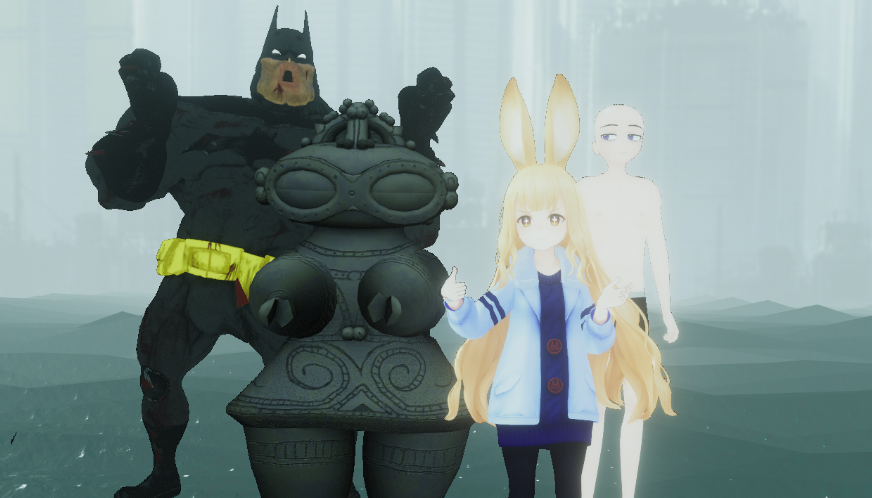
Are there any comics of yours currently that you could see yourself making into a game like what you did with Bad Faith?
Before I started working on "All Below Kaiju Zaibatsu", my original idea was to make a 'dating sim' version of a comic I did several years ago called "How to Checkmate your Mates".
"How to Checkmate your Mates" was a parody of the male-oriented "self help guru" market and it is largely a tongue-in-cheek 'how to' on being 'successful' utilizing overused quotes from Sun Tzu, cheaply 'gamifying' a normal social experience or pushing questionable nootropic products to 'boost' brain performance.
I did shelve the idea of turning it into a dating sim because I thought the story would've taken too long to write. Funny enough, "All Below Kaiju Zaibatsu" is my longest game ever, so I guess I probably miscalculated somewhere.
Perhaps one day!
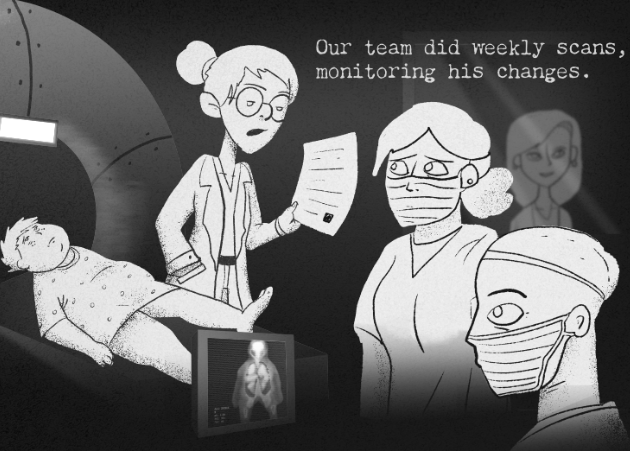
Now let’s get to your latest releases: Melissa💗 and its spin-off Morris💗, both of which are about the player dating a fictional character from a game on an old computer. Starting off with Melissa💗, you’ve said you created the game in under a week. How did you manage to pull that off?
Melissa was a largely improvisational effort, pressured by the deadline of the 2022 Spooktober Game Jam. I REALLY wanted to participate in it, since it would've been the anniversary of me getting back into game development. Unfortunately, throughout the month, I had NO time to work on anything until the very last week of the deadline.
I honestly didn't even have a full story until two days before release. At the beginning, all I knew was that it was going to take place in front of a computer, and that it would be set around the era of the Apple II.
It was only when I did the final artwork of the character, Melissa, that I realized I wanted to go the campy horror dating sim route. I drew most of the art assets without much idea how to get from point A to B, and wrote most of the game as I was playing with the assets.
It really does work to the strengths of Visual Novels to allow this kind of improvisational storytelling.
Melissa💗 gained popularity very quickly! First off, congratulations on the success of your game! Definitely well deserved. We wanted to know: how did you handle all the attention your game received since its release (e.g., YouTube videos, other devs trying to repost the game as their own)?
I'm still in shock. It just doesn't feel normal. Hahaha. What is wrong with people? Shouldn't they be into a more proper game???
The response to it has been intense. A bit overwhelming. But also... felt really good. I like it. :)
I do remember when someone posted a screenshot from Markplier's video of it, and I thought someone was trying to prank me, because there's absolutely no way that he'd put any time into playing my stupid game. It was wild to see so many people play it, and talk about it.
I never experienced people drawing fanart for any of my crap before, and when people started @ing me about it, my heart just melted.
It was a hugely encouraging experience, and makes me excited to make more games.
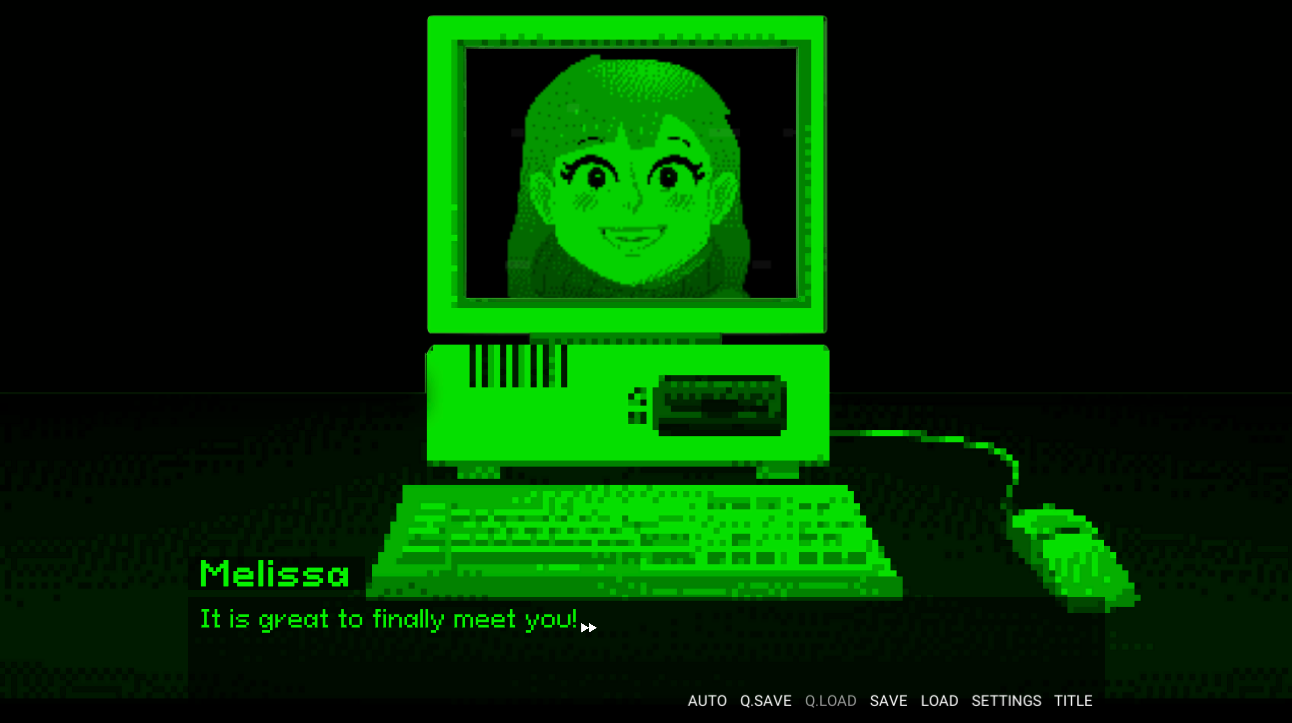
What did you learn from Melissa💗 and how did you take what you learned and put that into Morris💗?
Melissa set up a world for Morris to live in and also introduced new technical challenges.
Before Melissa, I had largely worked with static assets. In Melissa, I gave all my assets a constant animated "pulse", which gave them more life.
With Melissa's sequel, I wanted to use this animated style to push further in cinematic storytelling, including animated cutscenes, animated environments and some character animation.
This was a huge challenge to me since I never touched the Unity animation system before, but I thought it was essential to the story of Morris to have these features put in.
The story of Morris tries to further expand on the world of Melissa, while still standing out as its own thing. I knew I couldn't have it just run the Melissa plot points, but with a different person at the helm, and writing Morris as a faithful sequel to the original Melissa did have those challenges attached.
Out of Melissa💗 and Morris💗, which do you prefer and why?
Melissa and Morris fulfill completely different goals for me.
I think Morris is a summary of an entire year of trying to be a better storyteller. The game carries with it every lesson I learned from "Bad Faith" to "Melissa" along with the additional technical skills I learned for animation and cut scenes.
Melissa, on the other hand, was more of a high energy trip of developing and formulating ideas as I worked. If Morris is a summary of an entire year of trying to be a better storyteller, Melissa was an exercise of trying to be better thinking on my feet.
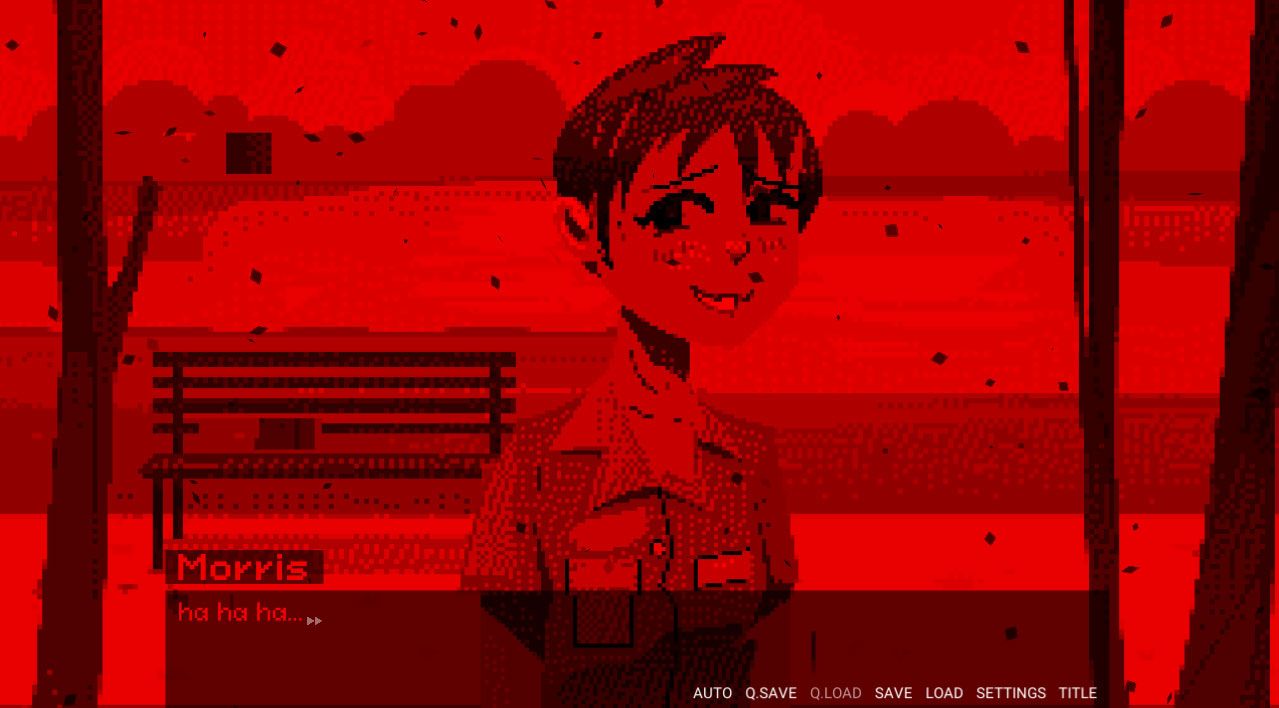
You’ve dabbled a bit into everything: sci-fi, horror, romance, and comedy. Is there any particular genre that you’ve done that has been your favorite and why?
Much of my comics & animated shorts, prior to my journey into Visual Novels, centers around comedy.
If there's a lingering genre in all of my visual novels, it's comedy. Even "Long Time No Life" has its own gags in it, and it's a very useful tool as contrast for other elements.
Asides from that, I do enjoy exploring areas of storytelling I'm not completely comfortable in as I continue making VNs! I certainly find horror pretty fun ever since I started! :D
What are you currently working on that you would like to tell our readers about?
I also do REALLY stupid comics on my instagram - CatTrigger.Comics.
I used to do it weekly for years, but kind of slowed down due to the busy season in the latter half of last year. I hope to go back to some kind of routine soon.
Here's one of my favorites:

Lastly, will players be smooching Anna, a character who was teased in Melissa💗, soon? ;)
I do have plans laid out for a third installment to the series. I hope to have announcements in the near future about what it'll be.
If you would like to keep up-to-date with CatTrigger and what they're currently working on, whether it's their comics or games, you can follow them on Twitter! You can find all their comics on their Instagram page and their games on itch.io. They also have a Tumblr you can check out if that's a platform you're on!